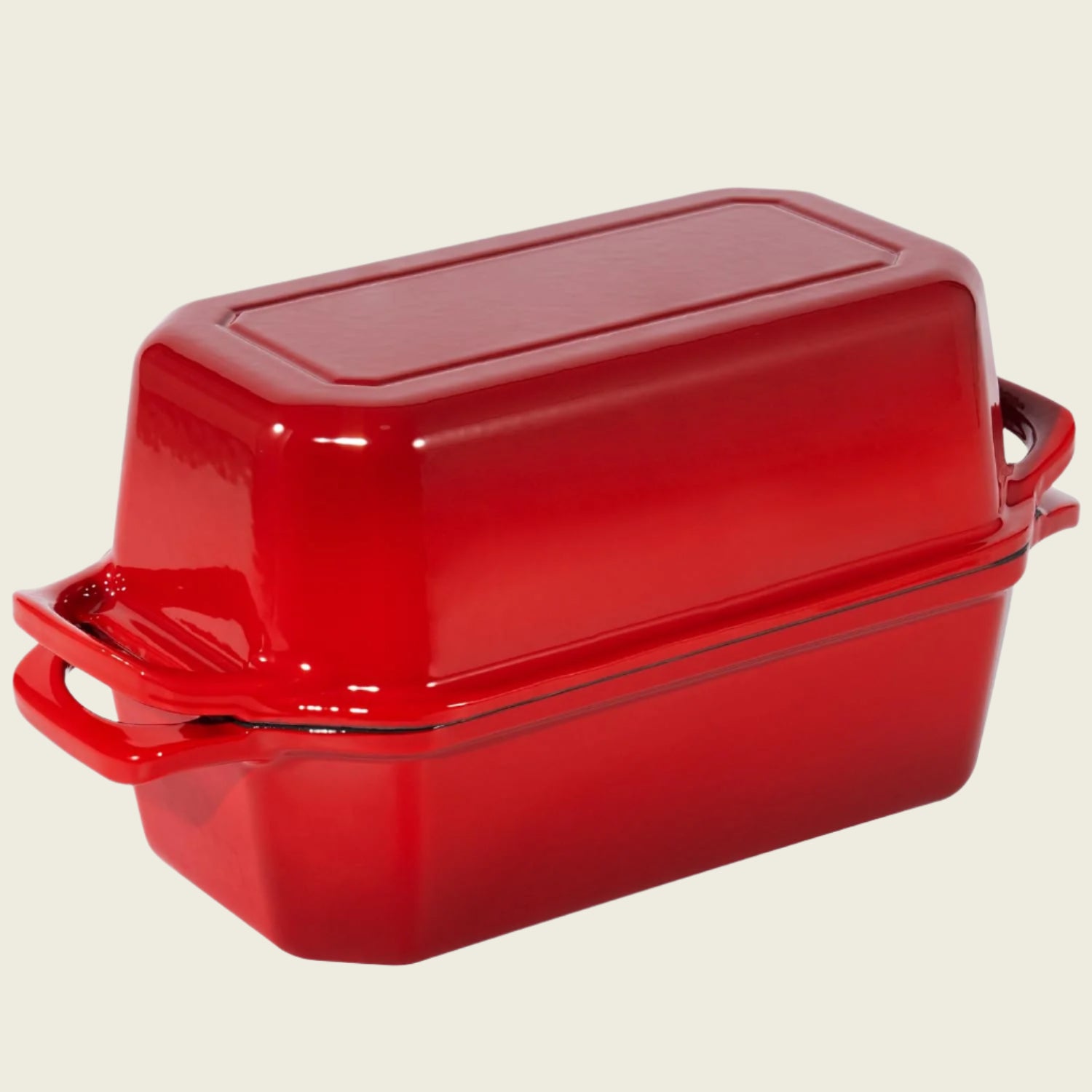Loaf Pan Size Guide: Standard vs. Long Loaf Pans
Share
When a recipe calls for a standard loaf pan, it’s easy to assume that any pan close in size will work. But in baking, pan choice is never trivial. Switching from a 9x5-inch pan to a much larger 13x5-inch pan can completely change how your loaf bakes. Understanding why comes down to one thing: volume.
What Counts as “Standard”?
In the U.S., two loaf pan sizes are commonly referred to as standard:
-
8.5 x 4.5 inches – holds about 6 cups of batter. Best for dense quick breads, pound cakes, and meatloaf where a higher rise is desirable.
-
9 x 5 inches – holds about 8 cups of batter. This is the workhorse size for many recipes, giving loaves a bit more width and a lower dome.
That small difference of half an inch translates to about 15% more volume, and even that changes rise, shape, and bake time.
Using a 13x5 Loaf Pan
The 13x5-inch loaf pan is bigger than the standard 9x5, typically holding around 12 cups of batter. That’s about 50% more volume.
Pouring a standard 9x5 recipe into this pan without adjustment will result in a thin, flat loaf. Batter depth is crucial—it affects structure, moisture retention, and texture. A thin layer may bake faster but can dry out, rise less, and produce a denser crumb.
Making a 13x5 Pan Work
Here’s the good news: the 13x5 pan can be fantastic for baking—but it works best when the recipe is scaled to match the pan’s larger volume.
-
Scale the recipe – Multiply every ingredient by 1.5 to match the pan’s 50% larger volume. Flour, sugar, eggs, liquids, and leaveners all need to increase proportionally.
-
Follow the 2/3 full rule – Never fill the pan more than two-thirds full. This gives the batter space to rise without overflowing.
If you don’t want to scale up the recipe, you can:
-
Bake the original batter in the larger pan, accepting a shorter, flatter loaf, and watch baking time closely.
-
Use leftover batter for muffins, mini loaves, or other treats.
Can I use a 13x5 pan instead of a 9x5?
A larger loaf pan is perfect if you want to bake bigger batches without running multiple pans or for recipes that benefit from extra width. Once you understand the volume adjustments, it’s a versatile tool in the kitchen.
By scaling ingredients and respecting batter depth, the 13x5 pan can produce moist, well-risen loaves, making it a great addition for bakers ready to experiment or feed a crowd.
Pan Material Matters Too
Beyond size, the material of the pan also affects results:
-
Metal pans heat quickly, encouraging strong oven spring and crisp crusts.
-
Glass pans heat slowly but hold heat longer. Lower the oven temp by 25°F when using glass to prevent overbrowning and expect a slightly longer bake time.
-
Dark metal pans get hotter faster than shiny pans, which can cause edges to brown or burn before the center is done.
The shape of the corners—sharp or rounded—is mostly aesthetic, though rounded pans are often easier to clean.
Key Takeaways
-
A 9x5 pan holds about 8 cups of batter.
-
A 13x5 pan holds around 12 cups—50% larger.
-
If you switch to a bigger pan, scale the recipe proportionally.
-
Always respect the 2/3 full rule to avoid overflow and poor rise.
-
Consider pan material when adjusting baking time and temperature.
